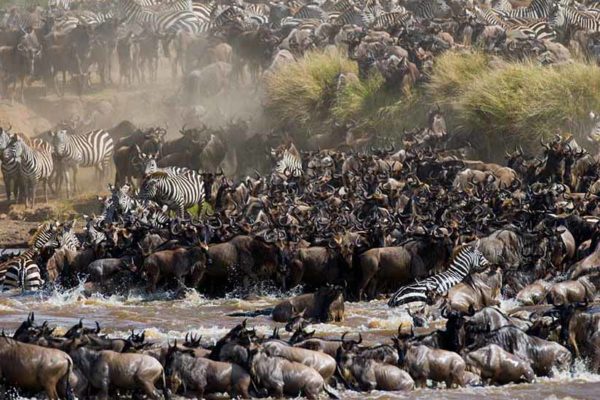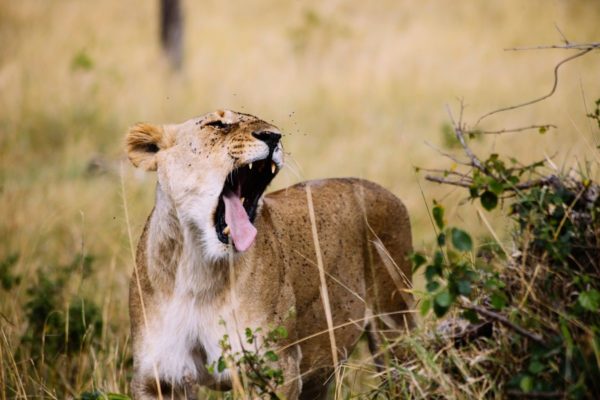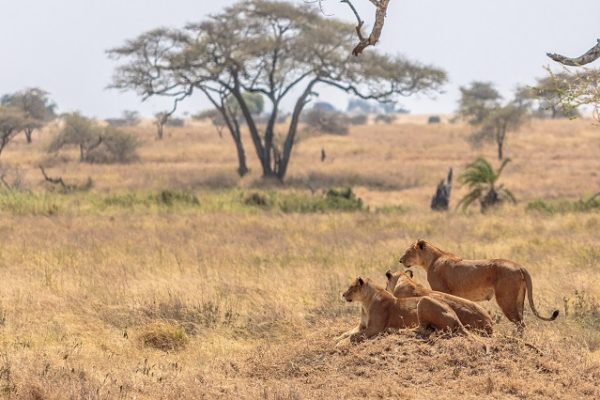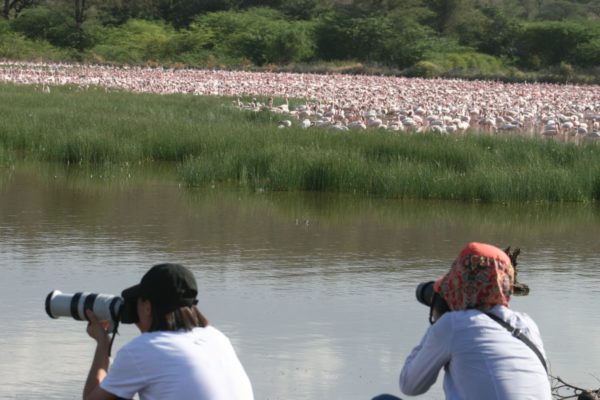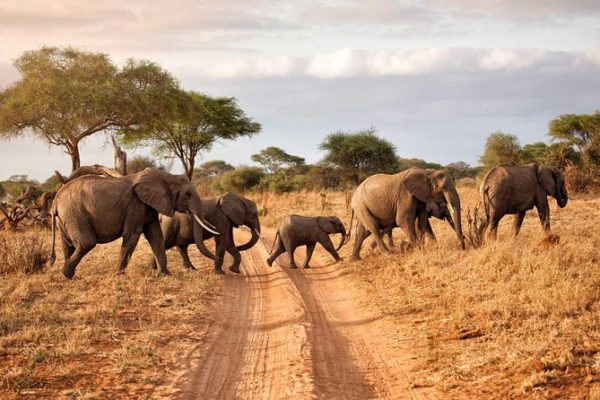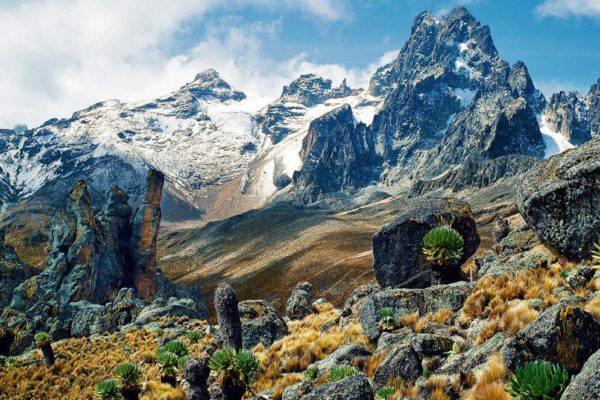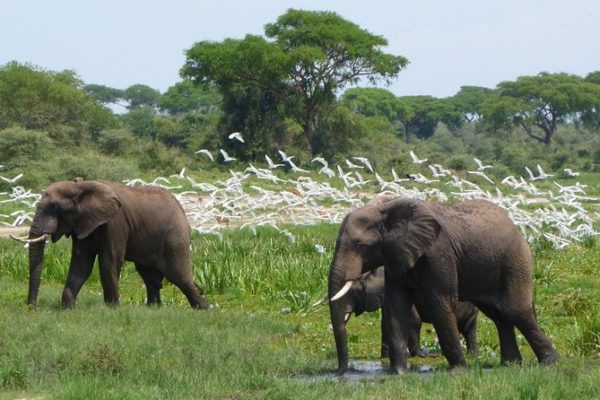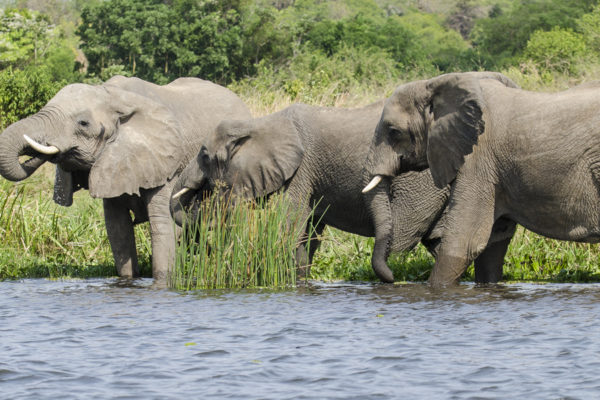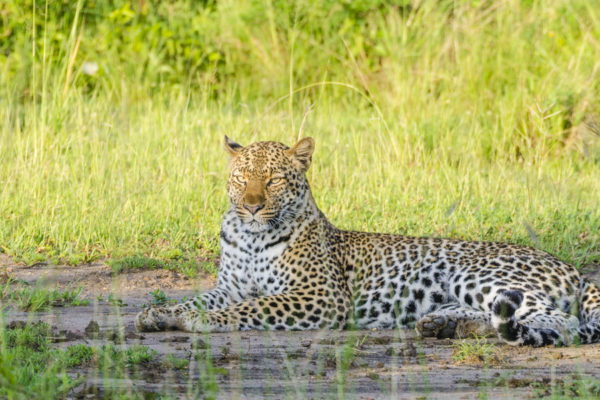NGORONGORO CONSERVATION AREA
Set in Northern Tanzania, Ngorongoro Conservation Area is a magnificent wilderness area of its own and also a designated World Heritage Site that is worth exploring on Tanzania safari. It is an extensive protected area with stunning volcanic Ngorongoro Crater and also features as a home to complete the big five African games. This conservation area was founded in 1959 and occupies an area of 8292sq.km.
It takes its name from Ngorongoro Crater which also features the largest intact and unbroken caldera. This area is best known to many as the Garden of Eden given its outstanding beauty and that is why the majority of tourists consider it a must-visit on Tanzania safaris. Ngorongoro Crater was designated as a UNESCO World Heritage Site in 1879 and it is undoubtedly an outstanding wilderness paradise.
Tourist attractions in Ngorongoro Conservation Area
- Ngorongoro Crater
This is an outstanding natural wonder Ngorongoro Conservation Area is blessed with. It remains the largest unbroken volcanic caldera in the world and it is one of the most explored sites by visitors on Tanzania safari in this conservation area. Ngorongoro Crater has a depth of about 2000 feet and covers an area of about 260sq.km. It formed after a volcanic explosion of about 2-3 million years.
- Olduvai Gorge
A visit to Ngorongoro Conservation Area isn’t about exploring the extensive Ngorongoro Crater alone but also for discovering other sites including Olduvai Gorge which is famous as the Cradle of Human Kind.
This is a remarkable archaeological site where the first human evolution remains in the world and was discovered by Louis Leakey and Mary Leaky around the 1950s. Today, it is one of the significant sites which is visited by travelers on Tanzania safari.
- Wildlife
The Ngorongoro Conservation Area also hosts a diversity of wildlife species including a complete list of big five African games that is African buffaloes, elephants, rhinos, leopards, lions as well as blue wildebeests, hippos, grant’s zebras, Thompson’s gazelles, waterbucks, elands, cheetahs, East African wild dog, servals, and many others.
- Birdlife
An estimate of over 500 bird species calls Ngorongoro Conservation Area their home hence making it one of the most sought for birding safari destinations by most visitors on Tanzania safari. The possible birds to sight in this conservation area include Kori bustard, ostriches, Hartlaub’s turacos, Egyptian vultures, Eastern spoonbill, capped wheatear, red and yellow barbets, Hildebrandt’s starling, Hildebrandt’s spurfowl, Eastern double collared sunbird, African spoonbill, Augur buzzard, Jackson’s widowbird, Livingstone Turacos, Kenya rufous sparrow, greater flamingos, Fan-tailed widow bird, Namaqua dove, Verreaux’s eagle, White napped raven, Speke’s weaver to mention but a few.
Safari activities to do in Ngorongoro Conservation Area
- Game drives
Game drives are an exceptional way to explore the diverse wildlife species in the Ngorongoro Conservation Area. The game viewing experience in this conservation area is best done in a 4×4 safari vehicle and it lets you sight different wildlife species including elephants, buffaloes, lions, leopards, birds, blue wildebeests, antelopes, and many others.
- Birding
Bird watching in Ngorongoro Conservation Area rewards birders with amazing bird sights. The birds to keep your eye on including Hartlaub’s turacos, Egyptian vultures, Eastern spoonbill, capped wheatear, red and yellow barbets, Augur buzzard, Jackson’s widowbird, Livingstone Turacos, Kenya rufous sparrow, greater flamingos, Fan-tailed widow bird, Hildebrandt’s starling, Hildebrandt’s spurfowl, Eastern double collared sunbird, African spoonbill, ostriches.
- Walking tours
Visitors can also walk in and around the Ngorongoro Conservation Area. The short walks take tourists through different sites including Empakai/Olmoti craters and if you are interested in long walks, you can start your hike from Olmoti to Empakai and descend to the Great rift valley. Other sites to visit include Olkarien Gorge, Nasero rock, and many others.
Other safari activities to engage in while on Tanzania safari in Ngorongoro Conservation Area include camping, Maasai cultural tours, photography, and filming.
- Best time to visit Ngorongoro Conservation Area
Ngorongoro Conservation Area is open to tourists on the Tanzania safari holiday throughout the year. However, the dry months are recommended for game viewing and this means you can visit this conservation area starting June, July, August, September, and October; December, and January.
- Where to stay in Ngorongoro Conservation Area
The different accommodation units to spend a night in Ngorongoro Conservation Area include Ngorongoro Crater Lodge, Ngorongoro Sopa Lodge, Lemala Ngorongoro Tented Camp, Serene Ngorongoro Lodge (Luxury), Ngorongoro Forest Tented Lodge, Ngorongoro Wildlife Lodge, Hhando Coffee Lodge, Ngorongoro Rhino Lodge (Mid-range).
Related Tanzania National Parks – Where to go for a Tanzania Wildlife Safaris Tour
Serengeti National Park is remarkably one of the oldest and the most popular national parks in the world. This protected area lies between the Mara and Simiyu region of Tanzania. It was founded in 1951 and in 1979, it was designated as UNESCO World Heritage Site. Serengeti National Park sits in an area of about 15000sq.km and it largely consists of woodland. View Details Here
Arusha National Park is rated among the smallest parks in Tanzania and it lies in the Northeastern side of the country. It is 25kms from Arusha, 58kms away from Moshi Town and 35kms from Kilimanjaro International Airport. Despite its size, this park is by far one most unusual wilderness area to consider a must-visit on Tanzania safari. It was founded in 1960. View Details Here
Tarangire National Park takes its name from Tarangire River and exceptionally, it features among a few safari parks which offer tourists on Tanzania safari with unique and authentic experiences. This park straddles within the Northern circuit of Tanzania, Lake Manyara region and it is famous for its large herds of elephant migration which make it an excellent Tanzania safari destination. View Details Here
Lake Manyara National Park is of no doubt one of Tanzania’s exceptional safari parks tourists on Tanzania safari should consider a must-visit. It is approximately 126kms Southwest of Arusha Town. Lake Manyara National Park was founded in 1960 and it covers an area of only 330sq.kms which makes it one of the smallest parks in Tanzania. Lake Manyara National Park is surrounded by Tarangire National Park and Serengeti National Park. View Details Here
Mahale Mountains National Park is set along the shores of Lake Tanganyika, Kigoma area Western Tanzania. Compared to other protected areas, Mahale Mountains National Park is remotely located providing tourists on Tanzania safari with exceptional wilderness experiences. It takes its name from the Mahale Mountain range which lies at its border. Mahale Mountains National Park. View Details Here
Kilimanjaro National Park is undoubtedly one of the most magical Tanzania safari destinations. It derives its name from the magnificent Mount Kilimanjaro which itself it an outstanding safari site to explore on Tanzania safari. This park is set near Moshi Town in the Northern side of Tanzania above the rolling hills and plateau of Amboseli National Park. View Details Here
Ruaha National Park is set in the heart of Tanzania, approximately 130kms away from Western Iringa Town. This park was founded in 1964 and it is named after the Great Ruaha River that flows on its Southeastern side. It sits in an area of about 20226sq.kms making it the most extensive national park in Tanzania and East Africa at large. It covers a section. View Details Here
Udzungwa Mountains National Park is one of the best parks to visit on Tanzania safari. In 2015, this park was ranked the third best place to visit by the New York Times. It is situated south of Mikumi National Park and it is popular as the Galapagos of Africa. It takes its name from the word Wadsungwa which denotes Kihehe language as people. View Details Here
Rubondo Island National Park is one of the 2 only stunning island safari parks which straddle in the islands of Lake Victoria. From western Mwanza, this protected area is 153kms away and its highest point is Masa Hills in the South which stands at altitude of about 1486m. It was gazetted as a game. View Details Here


